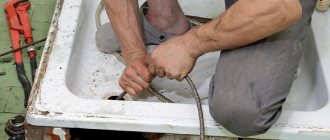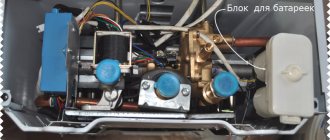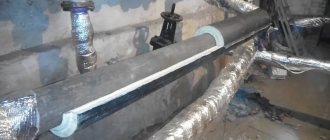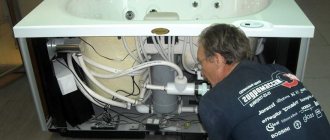A washing machine is a faithful assistant in any family. It’s unpleasant when it breaks and you have to wash a bunch of laundry by hand. Breakdowns of such large equipment as a washing machine almost always lead to calling a technician and unnecessary expenses.
Minor faults of washing machines can be fixed at home, but to get rid of major ones you will need qualified assistance from a specialist. Next, we’ll tell you how to independently assess the extent of the damage and fix some simple car breakdowns using home methods.
Determining the malfunction of washing equipment by codes
All washing machines can be divided into two categories - with electronic or mechanical control. It is the first type of washing machine - with electronic control units - that is capable of diagnosing operational deficiencies and displaying a breakdown or damage code on a special display. Using this code and the instructions for the machine, anyone can determine what happened to the unit and how to fix the problem.
You need to understand that each manufacturer has its own coding of faults, so it is best to refer to the instructions at the slightest suspicion of improper operation of the unit.
Modern washing machines are very sensitive to operating conditions, so they often issue fault codes that are easy to fix: a clogged filter, a loose door, a problem with water intake, or simply a lack of electricity in the network.
Useful tips for troubleshooting
The following troubleshooting tips may not be necessary if you always use the machine correctly. The easiest way to protect electronics is to unplug them. The power plug must be unplugged between washes (or the circuit breaker must be turned off). It is also recommended to shut off the water supply in order to maintain the functionality of the sensors and supply valves for a long time.
When eliminating problems with your own hands, you should never act primitively or rush. There is no need to try to repair the power cable, it is completely replaceable. Before any work, you should disconnect the machine from the network, examine the location of the operation, and select the appropriate tool.
You need to act carefully and carefully. If you are not completely sure of the causes of the breakdown and the ability to eliminate them, it is recommended to call a qualified specialist.
Washing equipment does not turn on
Sometimes a deadlock situation arises when the laundry and powder are loaded, but the machine not only refuses to work, but does not even want to turn on. There is no need to panic or get upset. The unit may not start working for several reasons:
- there is no voltage in the electrical outlet - you can use a multimeter or any working household appliance to understand whether there is really no current;
- there is damage to the plug - you need to check its integrity and contacts;
- the child protection function is active - look at the display, if there is a “lock”, then you need to disable this option, which blocks the start of washing;
- the loading hatch is not tightly closed - either you did not close the door yourself, or for some reason the lock did not work correctly, you can open and close the hatch again;
- failure of the electronic control unit - this will become a problem, since repairs are performed only by a qualified technician, and replacing the electronic control module is expensive.
If you cannot determine why the machine does not turn on, then most likely the problem is a malfunction of the control module, and you should call a technician.
Basic faults
Some causes of washing machine malfunction can be diagnosed at home. Some of them are simply neutralized. Understanding the origins of others will allow you to reduce the cost of repairs or carry them out yourself.
The machine does not turn on
The washing machine may not turn on for a number of reasons. The most unpleasant case, which requires expensive repairs, is the complete failure of the electronic control unit. In this case, the display may not even show an error. However, you should act consistently and start checking with simple possible causes.
- Checks to see if the machine is plugged in.
- Make sure that the emergency switch turns on and off normally.
- After disconnecting the machine from the network, check the condition of the voltage supply cable.
- The tester verifies that there is voltage in the outlet.
If deficiencies are discovered at the stage of such simple checks, they are eliminated. The power cable should not be wrapped with electrical tape, twisted wires, or other makeshift attempts to repair a break. The wire needs to be changed completely. The washing machine consumes a lot of current, so a supposedly repaired cable can cause a short circuit, fire or electric shock.
Other cases when the washing machine does not turn on are associated with a blockage that is installed by the electronic system. Modern models have built-in diagnostics. The error that appears on the screen may help determine the problem. Washing machines that are not equipped with a display have a different alarm system. Typically, a certain combination of LEDs will flash on the control panel.
Problems with heating, water flow and drainage
The lack of heating of water during washing clearly indicates a malfunction of the heating element. The problem can be caused by complete failure of the element, when an excess amount of scale accumulates on its surface and heat dissipation is reduced.
But in some machines there is a problem of insufficient contact area. The supply voltages of the wires burn out at the terminals of the heating element. Fixing the problem will require disassembling the case, cleaning the contacts and working a little with a soldering iron.
Failure to comply with the temperature regime indicates a malfunction of the control sensors or control unit. This group of problems is a rather unusual phenomenon. This requires the intervention of a qualified craftsman.
Frequent breakdowns look like problems with fluid circulation. If the machine does not draw water, the first thing to do is check the condition of the inlet filter. To do this, unscrew the supply hose and remove the mesh. When hard water is supplied, it becomes clogged with salts and can completely cut off the water supply.
Another reason for the lack of fluid collection is a breakdown or malfunction of the pressure switch. This unit can be checked if you have enough skills to carefully disassemble the case.
An elementary way to test the primary performance of a pressure switch: holding the product to your ear, blow into a tube placed on the inlet pipe. If you do not hear clicks, you need to change the unit or seek help from specialists. The fact is that the parameters of the pressure switch are set at the factory, and it is not recommended to change them.
The main failures of washing machines are: water stops draining or liquid pours out immediately after filling. The most difficult reason is the failure of the sump pump. In some cases, the machine may drain water directly while the program is running, or by interrupting its execution. In this situation, repairs and intervention by a qualified technician are needed.
However, everything can be much more prosaic. Some washing machine models require a certain elevation of the top point of the outlet hose above the floor level. If the tube leading to the sewer is placed incorrectly, the machine may not drain water, block the operation of the pump, or allow the liquid to immediately go down the drain. Therefore, reading and following the instructions for installing the unit is mandatory. This will help avoid unpleasant problems, and in some cases protect the house from leaks.
Weak spin of laundry
If the machine does not spin the laundry at all or only spins it weakly, the problem may lie in the following:
- A simple error in use. Often found in electronically controlled machines that allow you to set the rotation speed of the drum. The user simply forgets to switch the mode.
- Malfunction of the mechanical regulator that turns off the spin cycle. Eliminated by replacing the control element or cleaning its contacts.
- The drum is overloaded. If there is an excessive amount of laundry, water cannot quickly move to the boundaries of the waste tank. You need to divide the loaded items into two parts and squeeze them separately.
- There is too little laundry or it is not evenly distributed throughout the drum. In this case, the control system will detect the imbalance and will not allow the engine to develop high speeds.
There are also problems associated with electrical problems. For example, worn-out motor brushes do not allow enough power to be transferred to its windings. Or the drive belt has stretched and is slipping on the pulleys, preventing the drum from turning at the proper speed.
A more complex problem is the partial failure of the motor windings. In this case, the drive does not develop the required power. There are malfunctions in the operation of the tachometer, which counts the number of revolutions. The most expensive case is a malfunction of the electronic control unit. All problems listed in this paragraph require the intervention of a qualified specialist.
Problems with the control module
The only sure way to troubleshoot problems with the electronic control module of washing machines is to call a qualified specialist. Only in a workshop can you identify the faulty element and replace it. With simple home appliances, you can only check the integrity of the incoming and outgoing wires using a circuit indicator.
Control module problems can manifest themselves in a variety of ways. This may be a refusal to execute the selected program, incorrect adherence to the script, incorrect control of heating parameters and speed.
Most modern cars have their own control unit self-diagnosis system. If problems are detected, the device refuses to work and an error is displayed.
A knocking sound occurs when the washing machine is operating
If the machine vibrates and knocks when you first start it, the reason is simple. The shipping bolts were not removed during installation. They are usually located on the back wall of the case, and the need to unscrew them is clearly indicated in the instruction manual.
Another reason for knocking is incorrect installation of the unit. The machine must be leveled, for which there are adjustable legs at its bottom.
Knocking can occur due to foreign objects inside the drum, as well as due to their getting between its outer part and the elements of the machine body. Therefore, before loading laundry, you need to carefully check the pockets and the strength of the buttons. This simple measure will avoid not only disturbing sound, but also more serious problems.
A knocking sound that appears unexpectedly during constant operation can be caused by uneven distribution of laundry in the drum, including when the load weight is exceeded. More complex problems look like this:
- Wear of shock absorbers. To check, the tank is pulled towards the door and released. If it swings for a long time and does not immediately fall into place, then the shock absorbers need to be changed.
- Bearing faults. To check, you need to pull the tank up. If there is noticeable or severe displacement, the bearings need to be replaced.
- Wear of seals. To check, you need to remove the back cover of the case. Detected streaks of rust in the drum shaft area are a clear sign of a problem. In some cases, the motor may make an excessively loud noise when trying to start rotating the drum.
If you experience periodic or frequent knocking, as well as problems with insufficient spin, you should first try turning the drum manually. If you hear a quiet grinding sound or a repeating sound of iron rubbing against iron, it means you need to call a technician to replace the bearing block.
Unpleasant odor after washing
The cause of an unpleasant odor after washing or stains on laundry is mold and dirt that has accumulated in individual parts of the machine. The key to solving the problem is prevention. The machine must be wiped after washing, washing away any remaining powder from the receiving compartment. In addition, it is not recommended to install the device in a damp room, and during breaks in work it should be kept with the door open for drying and ventilation.
The easiest way to remove mold and dirt is to run a long program several times at the highest temperature. Between washes, the insides of the machine should be allowed to dry thoroughly.
You can remove mold and dirt using special products. Additionally, products such as Calgon can fight scale. They do not remove limescale, but rather slow down or stop its accumulation. The products bind salts and allow them to be removed along with water, without forming a durable layer on the structural elements of the machine.
Typical breakdowns of washing machines from different manufacturers
Manufacturers of different models of machines always try to make their products not only affordable, but also convenient to use. Sometimes innovations turn into design flaws, and each brand has its own weaknesses. Let's tell you more about them.
Ardo
In inexpensive Ardo washing machines, increased vibration causes the control module to shift. The heating element often fails, or leaks appear due to unreliable gaskets. In models with vertical loading, after 3-4 years of operation, rust appears on the top cover of the drum. Narrow Ardo machines sometimes make a lot of noise when operating at high speeds. Repair of these popular cars is inexpensive, so despite the breakdowns, they are loved by customers.
LG
Popular washing machines in LG lines are with direct drive. In this design there is no belt drive. This significantly increases the service life of the machine and the reliability of its operation.
But LG machines have a problem with the water drainage device. The filter and path become clogged more often, which causes errors and operational failures. By the way, the code for this error is specifically written in the instructions so that the owner of the unit can clean the drain in time.
There are also difficulties with the valve and water supply sensor. This is where rubber seals made of soft material suffer and wear out. The sensor often jams and too much water is collected. At the same time, the water begins to drain because the tank is full.
Indesit
This brand produces some of the most budget-friendly washing units. Cheapness turns into an unpleasant side - heating elements are made without a special coating and quickly fail under the influence of hard tap water. Such machines operate for no more than 4-5 years.
There are also problems in the operation of washing programs and modes: programs often freeze, are not executed completely, and the machine eventually breaks down. This indicates a poor quality performance of the electronic control module. It constantly requires attention and minor repairs. Replacing it is expensive. Therefore, if you need a washing machine for a large family with frequent washes, then Indesit is not the best choice.
Bosch
Bosch produces the most reliable washing machines in the mid-market segment. These units are distinguished by their quality of workmanship and attractive design. Bosch machines do not often require repairs if used carefully.
However, these machines also break down. Most often, problems arise with water sensor controllers or a filter clogged with dirt. These difficulties can be easily resolved at home with the help of instructions.
Ariston
The machines from the American manufacturer are reliable and easy to use. But they can also break, especially if operating conditions are not met. These machines do not tolerate hard water or untimely cleaning.
Some models have a problem with a specific odor from the rubber seal on the hatch. Moreover, even over time it does not disappear.
There is also a design feature - strong vibration when spinning or operating at high speeds. This leads to damage to the ECU and requires contacting a technician.
Samsung
One of the most popular washing machines on the market. Overall, they are well-built and quite reliable. According to statistics from services, the control module in Samsung machines breaks down extremely rarely, which indicates a high build quality.
But there is a problem with the heating element, which quite often deteriorates from hard water and fails. True, the heating element is easy to replace without the involvement of a specialist.
Some Samsung models can vibrate strongly and make increased noise when operating at high speeds. Under such conditions, the belt often breaks and has to be replaced. Here it is important to choose the appropriate model in length.
Samsung bearings are of very high quality and rarely break.
The filter on the water drain is located very inconveniently, so users are often too lazy to clean it. Because of this, the drain becomes clogged.
There is also a design flaw in the form of a too short water drain hose. Because of this, valves may malfunction due to water hammer, and water will flow back into the machine.
Electrolux
The power button and power cable on these machines are often poorly made, which can cause them to fail. Over time, the cable becomes frayed and the contacts are broken. In this case, you will have to check the entire cable to find the leak.
There are malfunctions in the operation of the control module: programs fail and washing modes are not followed. In this case, it is better to contact a service center to reflash the ECU.
Water does not fill or drain
Breakdowns in the drainage system are accompanied by disturbances in the drainage and collection of water. They occur due to the following details:
- drain hose;
- pump;
- filters.
After finishing the wash cycle, drain as much water as possible from the machine. A drain hose is used for this.
Water does not fill or drain in the washing machine
Dirt, small debris, and scale cause the drain filter to break down. It gets clogged with buttons, small objects and papers. Over time, the drain works worse, so if the problem worsens, then you need to pay attention to the drain filter. To do this, remove or unscrew the front panel of the equipment.
Other breakdowns cannot be repaired on your own. The control module that regulates the operation of the pump requires experience in repair.
The drum does not spin
The drum may simply mechanically jam. This can be checked by moving it from the inside. A jammed drum will remain in place, or will play a little, but not rotate. After removing the housing, look to see if any small objects are stuck between the tank and the drum. In narrow Indesit machines, buttons and “bones” from linen very often fall under the elastic into this space. A bearing that has failed due to wear can also jam the drum. To replace it, you will need to disassemble the tank. The destruction of the bearings is determined visually; replacement will require some effort.
If, after starting the program, you can hear the engine running, but the drum does not spin, it means the transmission belt has come off. If the design provides, then it can be tightened. If this is not possible, as well as in cases where the belt breaks, it must be replaced with a new one. When purchasing this part, it is important to choose one that is identical in geometry (length, number of wedges).
In direct drive machines (mostly represented on the Russian market by the LG brand), the drum is connected directly to the engine. In this case there is no transmission link, the reliability of the design is higher. But if a problem does occur, it is a global one - leaks from the drum go directly into the engine (through the shaft seal), causing a short circuit. In this case, repairs will have to be done by a service center and at great expense.
If the drum in the belt machine does not spin and the sound of the motor is not heard, the motor brushes most likely need to be replaced. You will need to disassemble the engine, remove the burnt brushes, and install new ones in their place.
It is imperative to clean the collector lamellas to ensure good contact. The cause of the breakdown may be a broken motor power cable. Most likely this can happen in places where it is bent. Much less often there are gaps between the control module and the engine itself, when the command to start work simply does not reach the performer.
Strong vibration and noise during operation
Noise during operation may appear in the machine if the fastening of the drum itself or its counterweight is loose.
There can be a manufacturing defect - play in some running parts, which is difficult to eliminate outside of a service center. Vibration during operation is also a source of noise, but it is visible to the naked eye. It also happens that the machine literally jumps around the bathroom. The first thing to check is whether the shipping bolts have been removed.
The machine must be clearly leveled. LG direct drive machines are especially sensitive to the horizon. Silicone pads on the legs help a lot. But anti-vibration mats, according to users, are useless.
If the bolts are removed, the machine is level, but there is still vibration, check the shock absorption system (as with noise).
Recommendations for use
Clean the detergent dispenser and detergent drawer as needed. After finishing work, wipe the rubber door seal and let the drum dry completely. Clean the inlet hose filter from time to time.
- Main advantages of digital television
Spare parts for coffee makers and coffee machines: what the owner of coffee equipment needs to know
Refrigerator repair by a professional: benefits
Use laundry detergents designed for machine wash only. For high water hardness, add special softeners.
Do not overload the machine with things, this may cause engine damage.
Washing at low temperatures creates an unpleasant odor, so use the self-cleaning mode. When using thick conditioners, add water to them, this will prevent the dispenser from clogging.
Do not use chlorine bleach as it may damage the heating element. Dispense detergents exactly according to the instructions. Do not pour stuck together washing powder, this will cause blockage in the device pipe.
Follow the rules for operating the equipment, and it will delight you for a long time.
Maintenance Recommendations
There are a large number of troubleshooting methods. The service life of your home assistant directly depends on proper and timely care.
The most common causes of breakdowns are hard water and power outages. Solving the problem is easy, you just need to install a filter unit and a voltage stabilizer.
What to do if the car engine does not work
A visual inspection of the unit will help identify the breakdown. How to get to the electric motor:
All that's left is to get the motor. Remove the belt from its pulley, disconnect the contacts and unscrew the bolts.
To identify the problem, you need to connect the rotor and stator windings. Connect a 220 Volt AC source to the free connectors. Is the node working? So everything is fine. Does not move? That means it's faulty.
Pay attention to the brushes and slats. Determine the degree of their wear.
Replacing brushes
If upon inspection it turns out that the length of the brushes is less than 5 mm, replace them. Prepare identical parts in advance, because they are different for each washing machine model.
When you start the engine, the brushes spark, but when checking, you noticed that they were almost not worn out. This is possible when installing new elements or connecting equipment for the first time. As soon as the brushes rub in, the sparking will stop.
To replace, disconnect the contacts of the parts and remove them from the assembly. Install new items.
Winding diagnostics
Why diagnostics? Because if the windings malfunction, they need to be rewinded. This is an expensive and unprofitable repair. It's easier to replace the entire engine. But you can check the windings for open circuits and short circuits yourself:
Slat repair
Inspect the slats. Minor flaking can be eliminated by turning the manifold on a lathe. After work, the elements are cleaned of dust and installed in place.
Upon inspection, it may turn out that the contacts have broken. It can be difficult to restore them yourself, so it is better to contact a specialist.
Prevention of breakdowns
Frequent breakdowns of household washing machines can only be caused by improper operation. In order not to blush in the presence of the master and not to incur unexpected expenses, you just need to follow the instructions included with the unit. The list of recommendations can be very long, but the basic rules are as follows:
- do not expose the machine to shocks during transportation;
- install it only on a flat horizontal surface, taking the time to adjust the legs;
- do not overload the tank beyond normal limits;
- use high-quality powders and do not pour in corrosive compounds unnecessarily;
- when using hard water, minimize washing at temperatures above 70 °C;
- clean filters regularly;
- keep all internal cavities dry and clean;
- At the first sign of a malfunction, eliminate its cause so as not to lead to a serious breakdown.
Watch a video on how to fix washing machine problems yourself
The door does not open
If, after finishing the wash, the machine door does not open, then this happens for two reasons - a breakdown of the hatch locking device and a malfunction of the sensor. He believes that the drainage of water is not completed and will not unlock the door.
Washing machine door won't open
This can also happen if the handle is broken. For repairs they use after-sales services.
Required Tools
Now, knowing the main components and operating principle of the machine, you can begin troubleshooting and repairs. But to do everything correctly, you need the right tool. It’s stupid to start repairing a machine by unscrewing the bolts with a knife.
To repair a washing machine you will need the following tools:
- Phillips and flat screwdrivers;
- flat wrench for 8, 10, 19;
- regular pliers with long bent noses;
- clamp pliers;
- wire cutters;
- service hook.
Worn motor brushes
If the brushes on the motor are not changed in time, this may cause the washing machine motor to stop working. You can determine the problem yourself by inspecting the collector. If during operation it sparks strongly (not necessarily around the entire perimeter), then the problem is obvious. If parts are replaced, at first they may also spark, which is normal, it’s just that the new brushes have not yet gotten used to the commutator. Loss of power is also a wake-up call. Warped brushes may not produce enough current and the motor will not be able to turn the drum.
It is recommended to install original brushes, since analogues can cause many problems during installation for several reasons. Analog brushes have slightly different dimensions and shapes, so they will have to be pre-treated. Finding a brush of the required length can take a long time, since different brands of washing machines differ greatly in this component. A self-made brush requires additional verification of its smooth movement without lateral play, which can cause jamming.
How to choose motor brushes
The durability of the brush is affected by its hardness. The presence of a copper tip is mandatory if it was also installed on the old brush. Graphite brushes should not be used; they are designed for low voltage use. After installing the brush, you need to let the motor run at low speeds.
Source
Unpleasant smell from the machine
The first thing you might think is that the machine needs cleaning. Yes, most often this happens. General cleaning will help here: boil the washing machine with a special product or citric acid. Flush the entire drain system using disinfectants. Even with regular maintenance, but with rare use of high-temperature conditions, when using environmental powders, or from soft water, the machine silts up (especially the sealing rubber and the space under it). The smell may be caused by an improperly connected drain hose. If it is located below the water level in the tank (below 30-50 cm from the floor), then there is no natural water sealer, and the smell from the sewer seeps into the machine. In this case, you need to secure the hose higher. Dry and ventilate the machine. After this, the smell usually goes away quickly.











